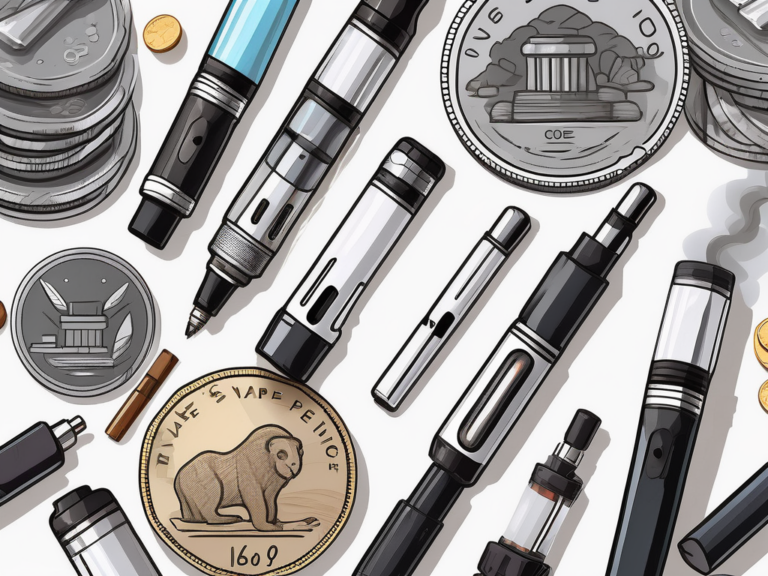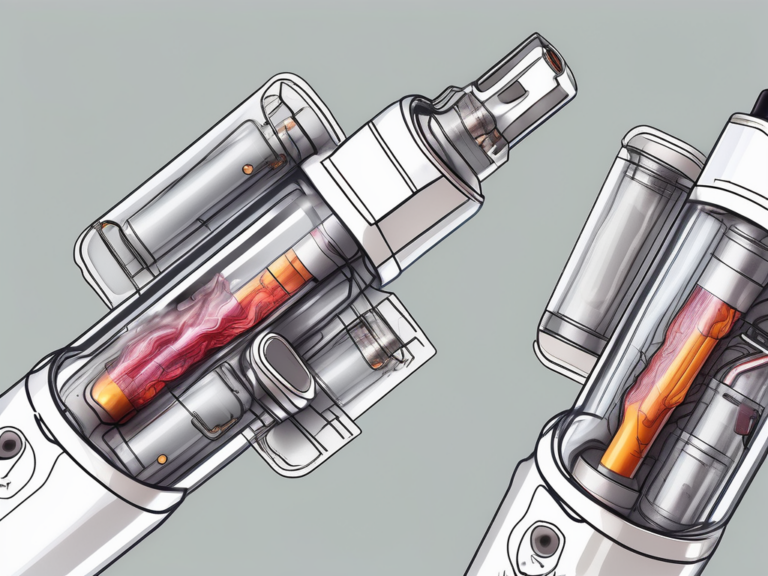what vapes are safe
Vaping has become a popular alternative to traditional smoking in recent years. As with any activity involving inhaling substances into the body, safety is a paramount concern. In this article, we aim to explore the topic of safe vaping and provide valuable insights into the components of a vape, how vapes work, common health risks associated with vaping, evaluating the safety of different vape brands, the role of vaping regulations in safety, and safe vaping practices.
Understanding the Basics of Vaping
Before delving into the safety aspects of vaping, it’s important to understand the fundamentals of this activity. At its core, a vape is a device that heats a liquid, commonly known as e-juice or vape juice, into an aerosol form that can be inhaled. Vapes typically consist of three main components: a battery, an atomizer or heating element, and a tank or cartridge to hold the e-juice. Each of these components plays a significant role in ensuring the safety and functionality of the device.
The Components of a Vape
The battery powers the vape device and is rechargeable. It is crucial to ensure the battery is of high quality and not prone to overheating or explosion. The atomizer or heating element is responsible for vaporizing the e-juice, and it’s vital to choose one that delivers a consistent and safe vaping experience. Lastly, the tank or cartridge holds the e-juice and must be made from materials that do not leach harmful substances into the liquid.
When selecting a battery for your vape device, consider factors such as capacity, output voltage, and safety features. Lithium-ion batteries are commonly used in vapes due to their high energy density and rechargeable nature. It’s essential to follow proper charging practices to prevent damage to the battery and ensure safe usage.
Choosing the right atomizer is crucial for a satisfying vaping experience. Different types of atomizers, such as coils and wicks, can affect the flavor and vapor production of the e-juice. Regular maintenance of the atomizer is necessary to prevent buildup and ensure optimal performance.
How Vapes Work
Vapes work by either manually activating a button or using a sensor that detects inhalation. When activated, the battery sends power to the heating element, which then heats the e-juice, turning it into an inhalable aerosol. This process creates the vapor that users inhale and exhale.
Understanding the intricacies of how vapes function can help users make informed decisions about their vaping experience. By familiarizing yourself with the components and operation of a vape device, you can ensure safe and enjoyable vaping sessions.
The Safety Concerns Surrounding Vaping
Vaping has not been without controversy, due in part to the concerns surrounding its safety. While vaping is generally considered less harmful than smoking traditional cigarettes, it is not without risks. It’s important to be aware of these risks and make informed choices regarding vaping.
One of the key factors contributing to the safety concerns surrounding vaping is the lack of regulation in the industry. With a wide array of e-juice flavors and devices available on the market, it can be challenging for consumers to know exactly what they are inhaling. This lack of transparency raises questions about the quality and safety of vaping products, highlighting the need for stricter regulations to protect public health.
Common Health Risks of Vaping
The inhalation of certain chemicals found in e-juice can have potential health consequences. Some studies suggest that vaping may increase the risk of respiratory issues, such as coughing, wheezing, and lung irritation. Additionally, there have been cases of severe lung injury associated with vaping, although these incidents appear to be rare.
Furthermore, the addictive nature of nicotine in many e-juices poses a significant health risk, especially for young people. Nicotine exposure during adolescence can harm brain development and lead to long-term cognitive impairments. This highlights the importance of restricting access to vaping products for minors and promoting awareness of the potential dangers of nicotine addiction.
The Controversy of Vaping Safety
Vaping safety remains a topic of debate among experts and researchers. The long-term effects of vaping are still being studied, and definitive conclusions have yet to be reached. However, it is crucial to approach vaping with caution and consider the potential risks associated with inhaling any foreign substances into your lungs.
Evaluating the Safety of Different Vape Brands
With the rapid proliferation of vape brands in the market, consumers are faced with the daunting task of discerning which ones prioritize safety above all else. Ensuring the safety of vape products is paramount, considering the potential health risks associated with vaping. Therefore, meticulous evaluation and informed decision-making are crucial steps in safeguarding one’s well-being.
Delving deeper into the realm of vape safety involves a multifaceted approach that goes beyond mere surface-level assessments. Apart from considering the brand’s reputation and perusing product reviews, consumers should delve into the certifications and quality standards adhered to by the manufacturer. A brand that is transparent about its manufacturing processes and sources of ingredients instills confidence in its commitment to producing safe vape products.
Factors to Consider When Choosing a Vape
When embarking on the journey of selecting a vape product, it is imperative to delve into various factors that can serve as indicators of safety and quality. Beyond the external packaging and marketing gimmicks, scrutinizing the origins of the e-juice ingredients and the brand’s track record in ensuring product safety can offer valuable insights. Moreover, examining whether the brand aligns with industry regulations and standards is pivotal in making an informed choice that prioritizes consumer well-being.
Top-Rated Safe Vape Brands
While explicit endorsements of specific vape brands are beyond the scope of this discussion, it is noteworthy that independent organizations play a pivotal role in evaluating vape products for safety and quality. These organizations conduct rigorous assessments encompassing manufacturing practices, ingredient purity, and compliance with industry benchmarks. Opting for products from esteemed and top-rated vape brands endorsed by such entities can serve as a proactive measure in assuaging potential safety apprehensions.
The Role of Vaping Regulations in Safety
As vaping continues to grow in popularity, regulatory bodies worldwide have implemented guidelines and restrictions to promote safety and protect consumers.
Vaping has become a significant trend in recent years, with a wide range of products available to consumers. This surge in popularity has led to increased scrutiny from health authorities and policymakers, prompting the establishment of regulations to ensure the safety and well-being of vapers.
Current Vaping Regulations
Vaping regulations vary by country and even by jurisdiction within countries. These regulations cover aspects such as age restrictions, product labeling requirements, advertising limitations, and the control of potentially harmful additives or substances. Staying informed about the regulations in your area can help ensure you are using vapes in compliance with local laws and regulations.
For example, some countries have implemented strict age restrictions to prevent underage vaping, while others have imposed limits on nicotine content in e-liquids to reduce the risk of addiction. Product labeling requirements often include detailed information about ingredients and potential health risks, allowing consumers to make informed choices about the products they use.
How Regulations Impact Vape Safety
Vaping regulations play a crucial role in promoting safe and responsible vaping practices. By establishing standards for manufacturing processes, ingredient purity, and product labeling, regulations can help safeguard consumers from potential hazards. However, it is important to note that regulations alone cannot guarantee the absolute safety of vaping products, and it is essential for consumers to exercise caution and make informed choices.
Moreover, some regulatory bodies conduct regular inspections of vape shops and manufacturers to ensure compliance with safety standards. These inspections help identify any potential risks or violations and allow authorities to take appropriate action to protect consumers. By working closely with industry stakeholders, regulators aim to create a safer vaping environment for all users.
Safe Vaping Practices
Implementing safe vaping practices is crucial to reduce potential risks associated with vaping. By following a few essential guidelines, users can enjoy vaping while minimizing potential harm.
Tips for Safe Vaping
1. Purchase vapes and e-juices from reputable brands with a proven track record of safety and quality.2. Properly maintain your vape device by regularly cleaning and inspecting its components.3. Adjust your vaping settings to avoid excessive power or temperature that may cause harm.4. Avoid modifying your vape device or using unauthorized accessories.5. Follow the manufacturer’s instructions for charging batteries and never leave them unattended.6. Dispose of used batteries responsibly.7. Avoid using expired or damaged e-juices.8. Be mindful of your surroundings and considerate of others when vaping in public places.
Maintaining Your Vape for Safety
Regular maintenance of your vape device is essential for its safe operation. Cleaning the tank, replacing coils regularly, and inspecting for any signs of wear or damage are all important steps to ensure the longevity and safety of your device. Additionally, storing your vape properly, away from extreme temperatures or moisture, can help maintain its integrity.
In conclusion, when considering what vapes are safe, it is crucial to understand the basics of vaping, the safety concerns surrounding this activity, how to evaluate the safety of different vape brands, the role of vaping regulations, and implementing safe vaping practices. By exercising caution, staying informed, and following best practices, individuals can reduce potential risks associated with vaping. Remember, your safety should always be a top priority.






